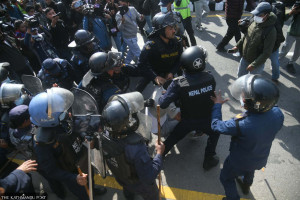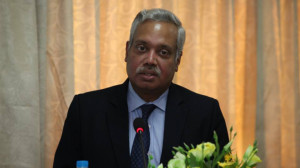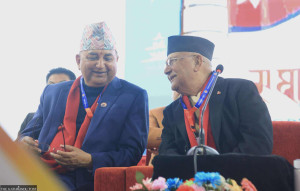National
Budhiganga project to be built under EPC model
The contractor must complete the project within 42 months under the Engineering, Procurement, and Construction (EPC) model.
Menuka Dhungana
The construction process for the 20-megawatt Budhiganga Hydropower Project— discussed for nearly three decades—has finally begun.
With 20 percent investment from Nepal government and 80 percent loan financing from the Saudi Fund for Arab Development and the Kuwait Fund for Arab Economic Development, the Department of Electricity Development has initiated construction.
On September 14, the project signed a contract under the Engineering, Procurement, and Construction (EPC) model.
The contract had previously been cancelled three times for various reasons.
The fourth contract has now been signed between the Chinese company Super Power Engineering Construction and the Nepali company Baniya Nirman Sewa Pvt Ltd of Makwanpur.
This is a fully government-owned hydropower project being developed directly by the Department of Electricity Development.
According to project chief Surendra Ghimire, the contractor has taken full responsibility for the project, from design to construction. Both companies aim to complete the project within 42 months.
“Since the contract is under the EPC model, there is no room for excuses to extend the deadline,” he said. “This project follows the EPC model, which speeds up work.”
According to the EPC agreement, the contractor will assume full responsibility for engineering design, procurement of materials, and construction. The contractor must complete the project within 42 months, ensure quality, and maintain controlled costs.
“The EPC model allows parallel progress of different components. While the dam and powerhouse are under construction, equipment procurement, installation, and testing can proceed simultaneously,” Ghimire said.
“This saves time, reduces risk, and minimises excuses for delays or cost overruns.”
He claimed that the EPC contract structure will help complete a large and complex project like Budhiganga on time.
He said the contractor’s technical team has already conducted two field visits to the project site. These visits helped the construction company understand materials, terrain, and the project area, making implementation smoother.
According to him, the project will be executed in two lots.
The first lot prioritises civil works, including the construction of the dam, access roads, and the powerhouse.
The second lot includes the installation, testing, and commissioning of mechanical and electrical equipment, such as turbines, generators, control panels, protection systems, and transformers.
The work in both lots will proceed in parallel, Ghimire said.
With recent challenges related to procurement and contracting now resolved, work at the construction site has begun. Construction of access roads, acceleration of design approvals, and preparation for the supply of construction materials have begun, he said.
Earlier, the project had cancelled its procurement process three times. According to the project office, each cancellation had different reasons: a lack of competition in the first attempt, excessively high bid prices in the second, and rejection by the main lender—the Saudi Fund—in the third.
The project was initially planned to begin in 2013, but preparation of the Detailed Project Report (DPR) alone took nearly five years. Although the DPR was completed in 2020, work did not progress for three years.
A loan agreement worth Rs6 billion was signed with the Saudi Fund on June 18, 2014, for project development, after completing engineering design and environmental impact assessments.
The Australian company SMEC International Pvt Ltd and the Nepali firm Uday Consultancy, which were contracted in 2015 to prepare the DPR, completed it only in 2020. The DPR preparation cost Rs199.133 million.
The government had planned to build the project independently, and studies commenced in 1995.
According to the feasibility study and environmental impact assessment completed in 1997, the project’s estimated cost is around Rs10 billion.
A separate loan agreement of 5 million Kuwaiti Dinars (approximately Rs 1.8 billion) was signed with the Kuwait Fund for Arab Economic Development on July 4, 2012.
The Saudi Fund has now extended its loan validity until 2027, from 2023. The remaining cost will be borne by the government of Nepal, as mentioned in the loan agreement.




 8.12°C Kathmandu
8.12°C Kathmandu















